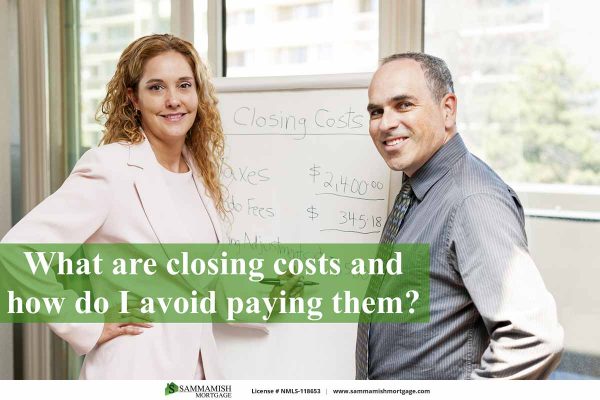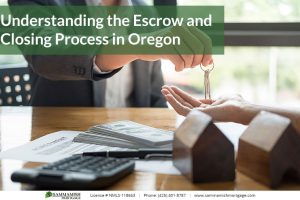No Obligation and transparency 24/7. Instantly compare live rates and costs from our network of lenders across the country. Real-time accurate rates and closing costs for a variety of loan programs custom to your specific situation.

Besides the down payment that you’ll have to put forth when you take out a mortgage to buy a home, there are also closing costs that buyers will have to pay. But what are closing costs, and can you avoid them? The article answers this question.
“No closing costs!”
“Apply for our No-Fee Mortgage today!”
“Don’t get ripped off with those outrageous closing costs!”
If any of these loud advertising claims sound familiar to you, it’s because some lenders flood the airwaves with their ads, and blanket the media with enticing claims. You might even believe that closing costs are some kind of scam used by unscrupulous mortgage companies to lighten your wallet.
Let’s look at what closing costs actually are, and then see how to handle them.
Closing costs are moneys paid as part of your loan transaction.
They fall into two categories:
Title insurance, escrow fees, appraisal fees, lender underwriting and document preparation fall into the first category. These expenses are incurred only once, when the loan is funded.
You should be aware that most of these expenses are present on ALL loans. Most of the nonrecurring closing costs are third-party fees, like escrow, title and appraisal. There are typically certain lender fees, as well, like underwriting, processing and document preparation. There is also an optional fee: discount points. Yes, you do have a choice about some of the fees!
Discount points—commonly referred to as just “points”—are a fee paid at the time your loan funds. One “point” is equal to one percent of the loan, so if you choose to pay one point on a $400,000 loan, you would pay $4,000.
Why in the world would any sane person pay money they didn’t have to? The answer is that if you choose to pay discount points, you will get a lower rate. Discount points are sometimes referred to as a “permanent buy-down.” This means that the borrower pays the fee once, at the funding of the loan, to reduce the interest rate permanently.
As a rule, paying one percent of the loan amount will reduce the interest rate .25%. This can save quite a lot of money over time; paying $4,000 to “buy down” the rate on a $400,000 loan will drop the monthly payment by about $55. That may seem like a small amount, but over a 30 year term, you would pay $20,500 less interest. If that seems like an attractive proposition to you, consider it. The important thing is that you are not forced to pay discount points on your loan—they are optional.
The second category of closing costs, prorations and prepaids, are initial deposits, such as to an impound account for the payment of future property taxes and insurance, and ongoing costs, like prorated interest and homeowner’s insurance.
Most homeowners today choose to pay part of their annual property taxes and homeowner’s insurance premium each month, along with their mortgage payment. This portion of the payment is placed into a separate account held by the lender. It is called an “impound account,” or “escrow account.” The two terms refer to the same thing.
When you start your loan, you have to deposit money into the account so there will be adequate funds available when the time comes to disburse for taxes and insurance. This is still your money—it is just earmarked for those two items. The amount of your initial deposit will vary, depending upon the time of year. You can expect as few as two months’ property taxes and as many as eight months at the outset.
If you are buying a home, you will pay the first year’s premium for your homeowner’s insurance in advance. Then, you will pay one twelfth of the payment along with your monthly payment to the lender. If you are refinancing and your current insurance policy is about to come up for renewal, you may have to renew the policy at the time your loan funds, ahead of schedule.
You will also pay prorated interest. When you make a mortgage payment, you are paying interest on the loan for the previous month. This is called “interest in arrears.” If your loan closes on the 15th of May, for example, you will make your first payment on the new loan on the 1st of July—that payment will cover the interest on the money for the month of June.
You will have the benefit of the lender’s money from May 15 to May 31, though, so the lender will charge you interest on a per day basis, for those days in May. This is the only time you pay interest on a mortgage in advance.
Closing costs can add up to be a large number—especially if you have an impound account for taxes and insurance. If you are refinancing a home you already own, you may choose to add those costs into the loan so you don’t have to bring money at closing week. This works well if there is adequate equity in the property.
But what if you have barely enough equity in the home to cover paying off the old loan? Or you are buying your first home with a minimal down payment—cash that you scrimped and saved for? What then?
You will be happy to learn that you have several choices of ways to handle closing costs. Aside from the obvious—paying them out of pocket—you can ask the seller to pay them for you if you are buying. While this may seem far-fetched, sellers are more willing to pay closing costs than you might think. If they agree to pay closing costs, they will simply raise the price of the house to cover the costs. As long as the appraisal supports the higher value, this works well.
The other choice is to get the lender to pay some or all of the closing costs. You do this by selecting a higher interest rate to generate a “rebate.”
Do you remember the mention of “discount points” a few paragraphs ago? You might call a rebate “negative points:” money from the lender to you, rather than the other way around. By raising the rate .25%, the lender will give you a rebate of about 1% of the loan amount.
When you see lenders’ ads claiming that they offer a “no-cost loan,” what they really mean is that they are giving you a rate high enough that the rebate is large enough to cover your non-recurring closing costs.
This can be a useful tool, but you should keep in mind that you will have the higher rate for as long as you have the loan. If you are refinancing and plan to keep your loan for longer than four years, financing your closing costs into your loan rather than getting a more costly “no-cost loan” will save you money.
The message you should take away from all this is that you have choices when it comes to handling closing costs. You should explore all your choices with your loan officer.
Will you need mortgage financing to buy a home? At Sammamish Mortgage, we offer a wide variety of mortgage programs and tools with flexible qualification criteria to borrowers. We have been serving the entire state since 1992, as well as the broader Pacific Northwest region that includes Oregon, Colorado, Washington, and Idaho. Please contact us today with any financing-related questions you have.


Whether you’re buying a home or ready to refinance, our professionals can help.
{hours_open} - {hours_closed} Pacific
No Obligation and transparency 24/7. Instantly compare live rates and costs from our network of lenders across the country. Real-time accurate rates and closing costs for a variety of loan programs custom to your specific situation.